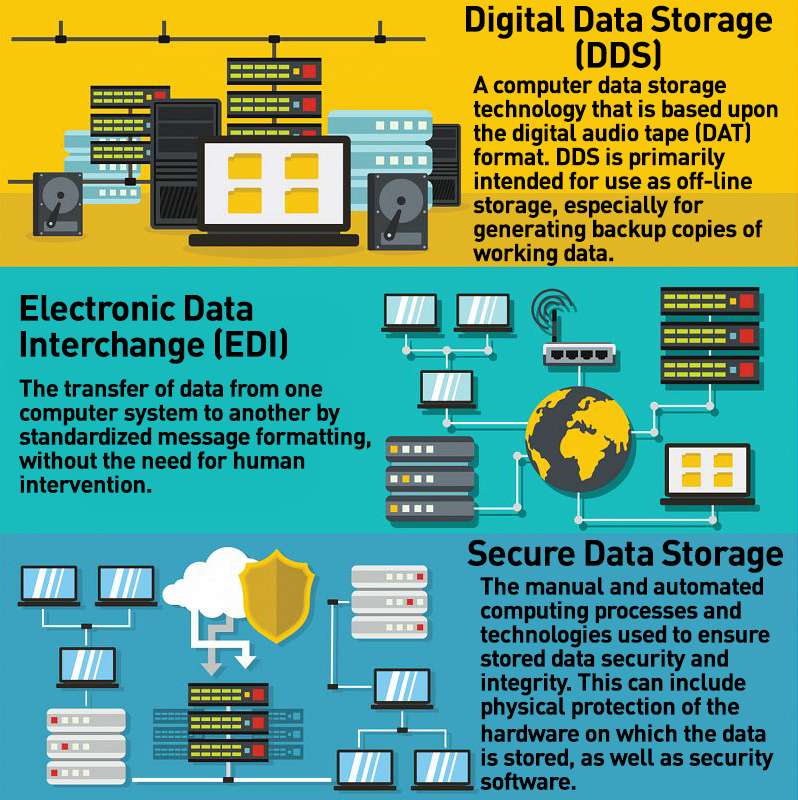Checking Out the Importance of Information Destruction in the Context of Computer System Safety And Security Solutions and Protecting Confidential Information
In an age where data violations are increasingly typical, the significance of effective information destruction can not be overstated. What approaches can organizations carry out to enhance their information destruction procedures?
Recognizing Data Destruction
Data devastation is a vital part of computer safety that entails the irreversible removal of data from storage tools to stop unapproved accessibility and potential data breaches. In a significantly electronic landscape, companies deal with enhanced threats connected with sensitive information being poorly accessed or manipulated. Effective data destruction safeguards against these risks, making sure that personal dataâEUR" such as consumer info, intellectual home, and economic recordsâEUR" can not be recouped after disposal.
Recognizing the significance of data damage prolongs beyond mere compliance with lawful and governing frameworks; it is necessary for keeping business honesty and trust fund. When information is incorrectly handled or inadequately damaged, the consequences can be extreme, consisting of monetary loss, reputational damage, and legal responsibilities.

Approaches of Information Obliteration

One prevalent method is information wiping, which includes overwriting existing information with arbitrary patterns multiple times. This technique renders the initial data irretrievable, making it a popular option for organizations seeking to secure secret information.
An additional approach is degaussing, which makes use of an effective magnetic area to interfere with the magnetic domain names on storage devices, effectively erasing the data. This approach is particularly effective for magnetic media but is not relevant to solid-state drives.
Physical damage is another robust approach, entailing the shredding or squashing of storage space devices. This method guarantees that information recuperation is virtually impossible, making it suitable for extremely sensitive info.
Finally, file encryption can offer as a corresponding method to data eradication. By encrypting information before deletion, companies can include an additional layer of protection, making certain that also if remnants are recouped, they stay unattainable without the decryption key. Each approach should be selected based upon the level of information sensitivity and the specific safety and security needs of the organization.
Legal Compliance and Information Safety And Security
Organizations must navigate an intricate landscape of lawful requirements connected to data security, specifically after applying techniques of information obliteration. Various laws, such as the General Data Defense Regulation (GDPR) and the Medical Insurance Portability and Liability Act (HIPAA), impose rigid standards on exactly how organizations need to get rid of and take care of of sensitive information. Failure to adhere to these regulations can cause substantial legal consequences, including considerable fines and reputational damage.
Information destruction processes have to be thoroughly recorded to demonstrate conformity with applicable regulations and criteria. This documentation not only functions as proof of adherence to legal responsibilities yet also illustrates a dedication to securing delicate information. Organizations ought to additionally develop clear plans pertaining to information retention and destruction timelines, making sure that information is not held longer than essential.

Furthermore, routine audits and evaluations of information destruction practices are necessary to maintain conformity and adjust to progressing lawful structures (data destruction). By proactively resolving lawful demands, organizations can reduce threats related to data breaches and show their commitment to information safety and security. Eventually, focusing on lawful compliance in data devastation procedures is not simply a regulatory commitment, however a basic facet of a robust data safety technique
Effect On Organization Online Reputation
The online reputation of a service can be considerably influenced by its technique to information destruction my latest blog post and management. In today's electronic landscape, where data violations can occur at any minute, the failure to properly dispose of delicate information can cause severe consequences. Organizations that inadequately manage information destruction threat exposing personal customer details, which not only breaches privacy legislations but likewise deteriorates trust fund among stakeholders and clients.
A damaged reputation can lead to lowered customer commitment, as clients come to be reluctant to engage with a service that has actually demonstrated neglect in safeguarding their information. Adverse attention bordering a data breach can have an enduring result, as possible consumers might be deterred by the regarded lack of safety. This can bring about a straight decrease in earnings and market share.
Additionally, businesses that prioritize data destruction as part of their protection technique can boost their reputation by showcasing their commitment to protecting sensitive information. By adopting strict data management practices, organizations can not only mitigate risks however likewise place themselves as credible entities in their particular industries, thereby strengthening their total brand picture.

Ideal Practices for Secure Disposal
Applying finest practices for safe disposal of data is necessary for alleviating risks linked with data violations discover here and making certain compliance with personal privacy guidelines. Organizations needs to embrace an extensive information disposal plan that outlines treatments for both physical and digital information damage.
For physical data storage space devices, such as difficult drives, shredding or degaussing is suggested to avoid information healing. In addition, organizations need to preserve a chain of custodianship documentation throughout the disposal process, making certain responsibility and traceability of disposed things.
For digital information, making use of software application that sticks to market standards for data cleaning is essential. This software program should overwrite existing data numerous times, making recovery essentially impossible. It is also essential to validate the effectiveness of the data damage procedure through audits or third-party analyses.
Educating employees on protected disposal methods includes another layer of safety and security, as human error can usually lead to data exposure. On a regular basis updating and assessing disposal policies guarantees positioning with progressing laws and technological developments. By executing these finest practices, organizations can substantially minimize the danger of unapproved information gain access to and improve their general information protection strategy.
Conclusion
Finally, data destruction is a basic facet of computer system safety and security services that makes certain the defense of secret information from unauthorized accessibility. Applying reliable methods of information obliteration, adhering to lawful conformity, and identifying the influence on service online reputation are necessary elements of a detailed information safety and security method. By adopting finest practices for protected disposal, companies can cultivate count on with customers and protect sensitive data, ultimately adding to an extra secure electronic landscape.
In a period where information violations are significantly common, the relevance of reliable data destruction can not be overstated.Information destruction is a critical element of computer system safety and security that includes the irreversible elimination of information from storage space devices to protect against unauthorized accessibility and prospective information violations. Organizations should additionally develop clear plans pertaining to information retention and damage timelines, making sure that data is not held longer than needed.
By proactively addressing lawful needs, organizations can alleviate threats connected with data violations and demonstrate their commitment to data safety and security (data destruction). Eventually, focusing on lawful compliance in information devastation procedures visit this web-site is not just a regulative commitment, yet a basic facet of a robust information safety technique